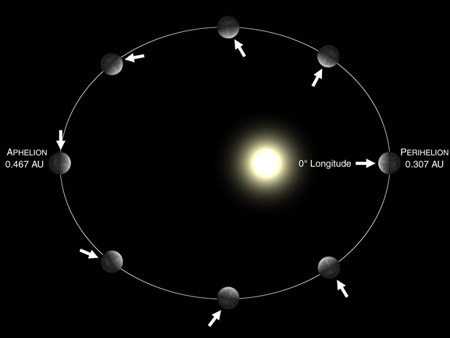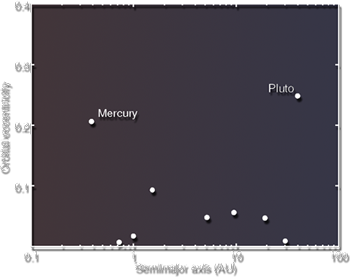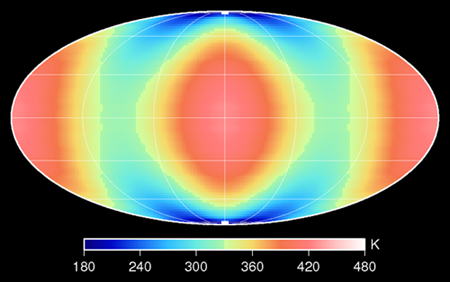

Resonance: Mercury is locked in a 3:2 spin-orbit resonance making three rotations about its spin axis every two orbits about the sun. Because of this, if you were on the surface of Mercury, the Sun would pass overhead once every two orbits around the Sun, or 176 Earth days. In other words, one day on Mercury (sunrise to sunrise, takes two Mercury years. A Mercury year takes 88 Earth days, the length of time to orbit the Sun.

Eccentricity: Mercury's orbit is very eccentric (non-circular). A circle has an eccentricity of 0 and a parabola 1. Mercury's eccentricity is 0.2, the highest of all the planets. The orbital distance between the closets point to the Sun (perihelion) and the farthest point to the Sun (aphelion) varies by 23 million km (14.3 million miles of 0.1592 AU), a variation in solar distance of ~41%.

Average Temperature: The consequence of its orbit is that longitudes 0o and 180o always experience noon at perihelion, and longitudes 90o and 270o always experience noon at aphelion. Because of its relatively high eccentricity, the solar insolation varys from 14,464 W m-2 to 6279 W m-2, equating to a variation in solar energy equivalent to 6 times the total solar energy we receive here on Earth (The Earth average solar insolation is 1366 W m-2). As a result, average surface temperatures are strongly dependent not only on latitude, but also longitude. Mercury experiences a temperature variation of about 100 oC (180 oF) about the equator.